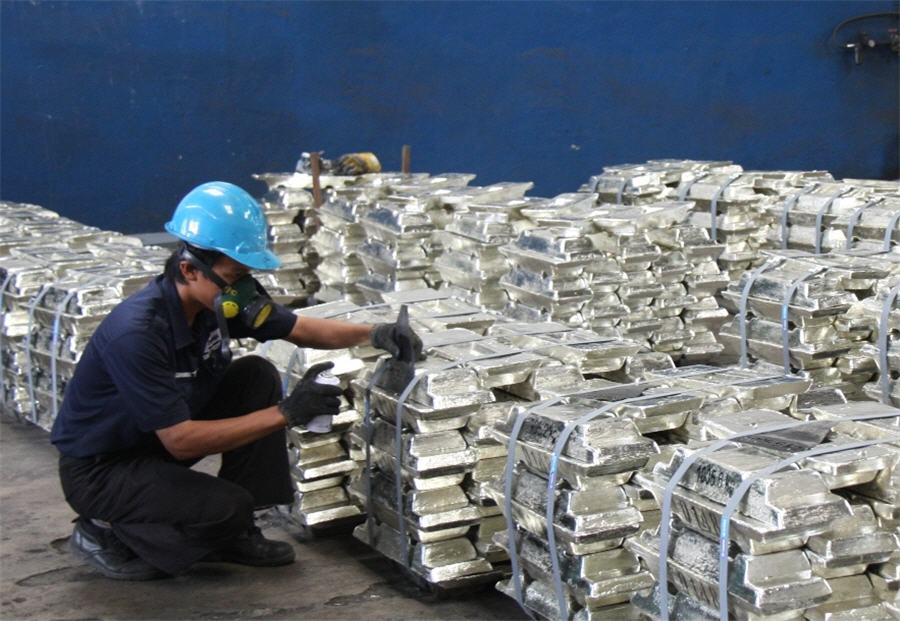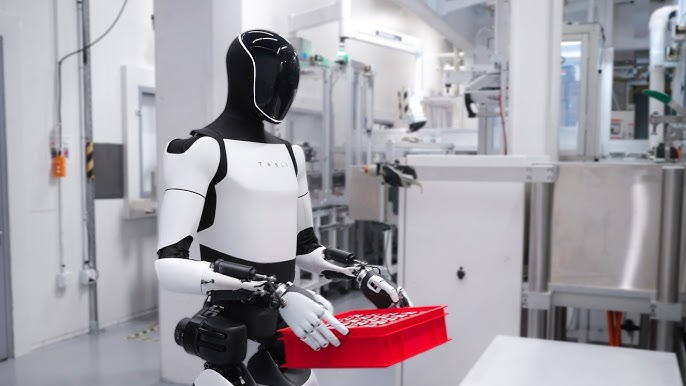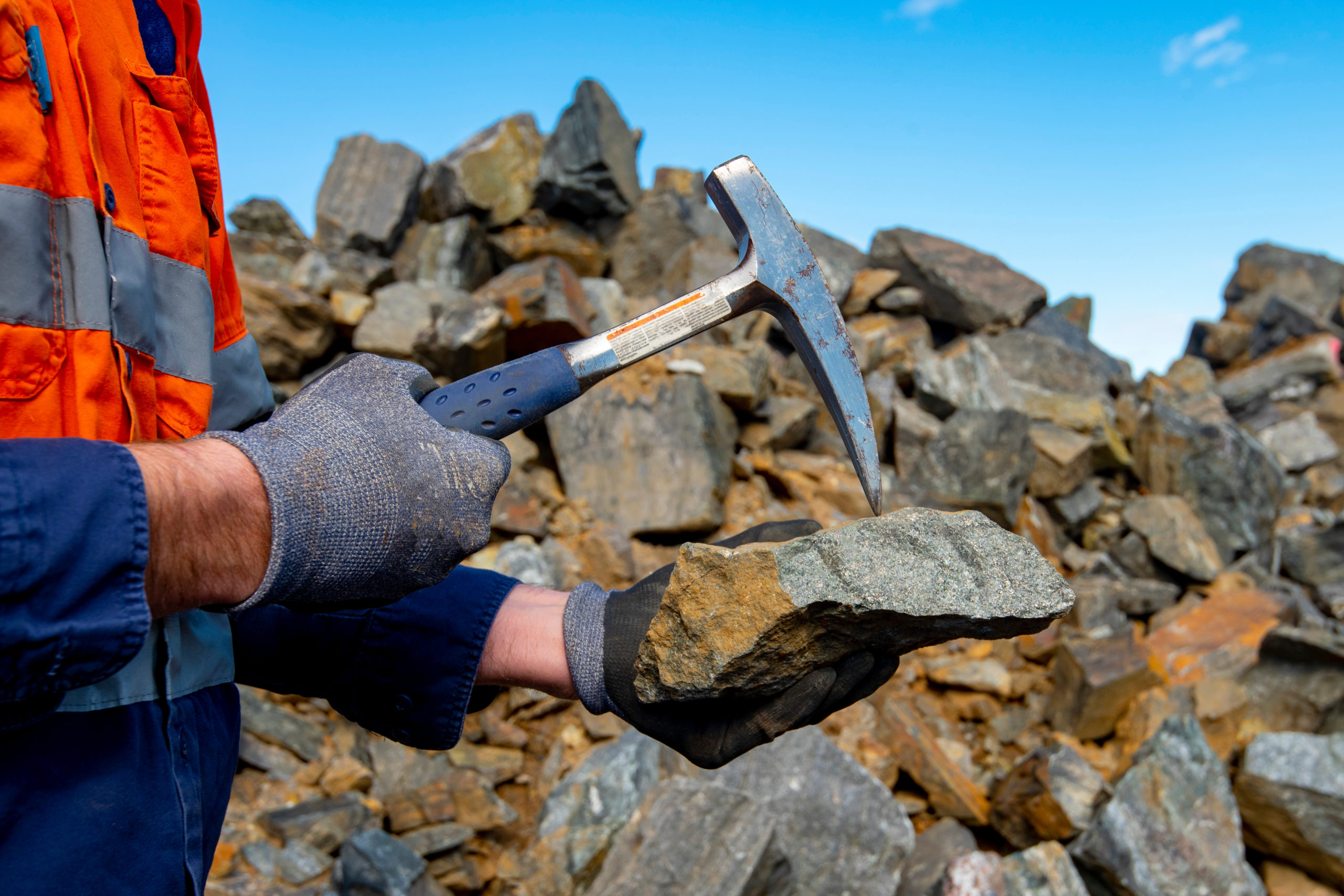Home: No relief for turbulent tin price as supply squeeze worsens

(The opinions expressed here are those of the author, Andy Home, a columnist for Reuters.)
The tin market super-squeeze rolls on.
Tightness on the London Metal Exchange (LME) contract remains acute. The massive premium for prompt delivery has enticed a trickle of metal into exchange warehouses, but not enough to tame market wildness.
The outright three-month price is currently trading around $25,700 per tonne, within striking distance of February’s ten-year high of $27,500. Tin remains the outperformer of the LME base metals pack, up 23% on the start of the year.
Tightness in the physical supply chain has driven premiums to record levels in both the United States and Europe, with flows of metal from Asia disrupted by backlogs in the container shipping sector.
US buyers may be in for some unexpected short-term relief as the Defense Logistics Agency prepares to sell its first metal in over a decade, but the underlying supply crunch shows no signs of resolving itself any time soon.
LME turbulence
The LME’s benchmark cash-to-three-months spread closed Tuesday valued at a backwardation of $1,600 per tonne.
The cash premium is down from a Feb. 15 peak of $6,500 but still off the historical charts.
Tin market turbulence in 2004 and 2009 saw the premium peak at $800 and $730 per tonne respectively. Both those squeezes look positively benign relative to the current turmoil.
The backwardation, which has been swinging wildly since the start of last month, has drawn some fresh metal into LME warehouses.
Certainly, judging by the distribution of arrivals at LME warehouses in Asia, a significant Chinese export response is still lacking
Exchange stocks have risen from a February low of 775 tonnes to 1,835 tonnes, but metal is also trickling out almost daily and 405 tonnes are “cancelled stocks” awaiting physical load-out.
Inventory is still very low by any historical yardstick. Moreover, all the arrivals have been in Asia. LME warehouses in Malaysia’s Port Klang have received 1,245 tonnes of tin since the start of February and those in Singapore 200 tonnes.
There is zero exchange tonnage left in either Europe or the United States. And there was zero tonnage in LME “shadow storage” at the end of January, according to the exchange’s latest monthly “off-warrant stocks” report.
Choked supply chain
The LME stocks picture captures the physical reality of the global tin supply chain.
There is evidently some metal available in Asia thanks to a hub of producers in Malaysia, Thailand and Indonesia but it is largely stuck there due to ongoing disruption in the container shipping market.
There is only one significant tin producer in Europe and none in the United States, leaving spot buyers high and dry.
Fastmarkets assesses the premium for tin in Rotterdam at $500-800 per tonne over LME cash, the highest it’s been since the company started tracking the premium in 2009.
Business is reported as being almost non-existent with those holding metal loath to lose it.
US premiums, both for metal in Baltimore and for delivered Midwest, are also at record highs of $1,200-1,500 and $1,300-1,600 respectively. Remember, these premiums are quoted over and above the LME cash price, which itself is massively elevated by the backwardation.
As in Europe, physical trading in the United States is being constrained by a lack of accessible material.
At least US consumers might be in for some short-term relief.
The DLA returns
The Defense Logistics Agency (DLA) has cottoned onto what is happening in the tin market and, as reported by Fastmarkets, is preparing to sell its first metal in a decade.
The DLA accumulated tin stocks in the 1960s and 1970s as conflicts in Korea and Vietnam heightened concerns about strategic supplies.
The Agency turned seller in the closing decades of the last century. Its last major sale was in 2007, when the tin price was also on a surge, the rally topping out at $25,500 in May 2008.
The current tender is for just 40 tonnes of tin but the DLA may only be testing the waters. As of last September it held 4,015 tonnes of metal, according to the US. Geological Survey (USGS).
The tender comes with a disclaimer about the potential weathering of the tin, but with imports still back-logged there is not going to be a shortage of bidders.
Desperately seeking tin
It remains to be seen whether the DLA’s sale is a one-off or the start of a campaign, but it’s not going to be enough to move the global supply dial.
Indonesia, the world’s largest exporter, can undoubtedly do so but its exports remain subdued.
Exports fell by 3% to 65,400 tonnes last year, the third consecutive year of decline. Shipments have dropped further so far this year, with cumulative January-February exports down by 42% on 2020 levels at 8,459 tonnes.
China, the world’s largest producer, was a consistent net importer of refined tin over the course of last year.
Shanghai stocks have risen by 3,378 tonnes to 8,853 tonnes since the start of January, suggesting local market tightness is easing.
But with Shanghai tin prices also on a roll, it’s unclear whether the arbitrage window can open sufficiently to allow exports.
Certainly, judging by the distribution of arrivals at LME warehouses in Asia, a significant Chinese export response is still lacking.
Consumption, meanwhile, continues to run strong thanks to a resurgent consumer electronics sector, the key driver of tin usage in the form of soldering on circuit-boards.
Wake-up call
The consensus is that global tin production will bounce back after a year of covid-19 disruption, but it’s evidently going to take quite some time to refill a depleted supply chain with shipping constraints a continuing complication.
This super-squeeze looks set to continue.
It’s a major wake-up call for tin producers.
Tin is already set to be a major beneficiary of what is dubbed the fourth industrial revolution. It is also undergoing a period of intense research and development, translating into a lengthening list of potential new uses for the bronze age metal.
Yet historical investment in new tin mines has been patchy at best. The biggest increase in mined supply over the last decade was an unpredicted tin boom in Myanmar, where output appears to have already peaked.
Events this year clearly demonstrate what happens when the supply chain is caught out by the strength of demand.
There’s a bigger challenge coming.
(Editing by Jan Harvey)
More News
{{ commodity.name }}
{{ post.title }}
{{ post.date }}



Comments